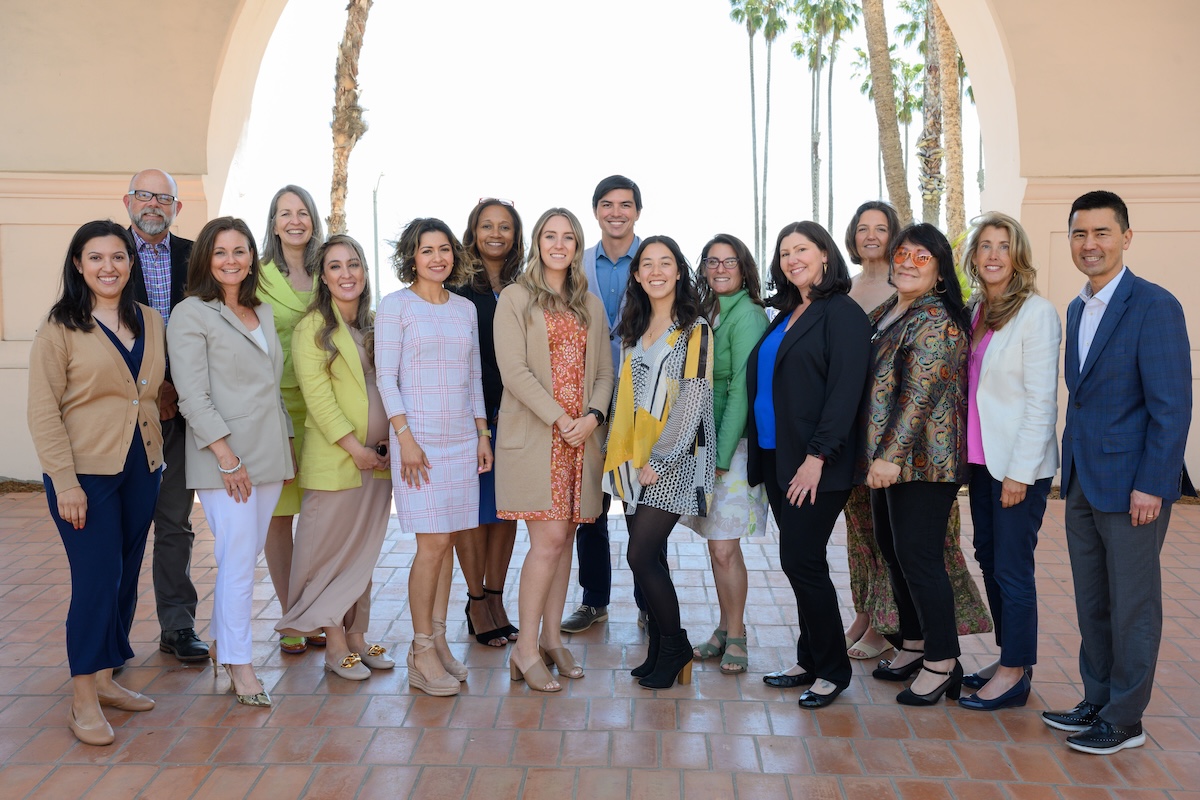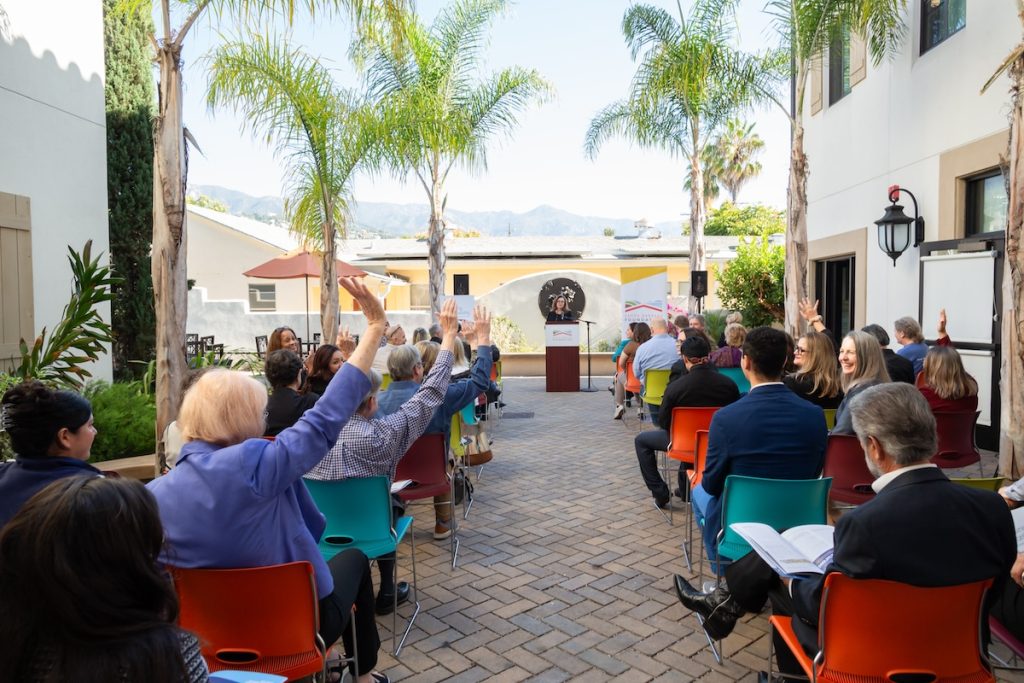Santa Barbara Foundation

For almost a century, the Santa Barbara Foundation has been a catalyst for change in Santa Barbara County, analyzing issues to identify challenges that burden people, and then convening community stakeholders to build coalitions and partner with nonprofits and other leaders working on the front lines to solve problems. While issues, approaches, and methods might have shifted over the years, the mission remains the same – to facilitate a thriving community for everyone.
Among the challenges the Foundation has taken on in recent years is to lift the burden of the high cost and low access to childcare for families, particularly those with middle incomes; they who make too much money to qualify for public programs but can’t afford market rates for childcare. Adding to the problem is limited availability of licensed providers, as research has shown that space is available for only one in 10 infants and toddlers countywide, resulting in a waiting list of more than 1,000.
“That’s an incredibly troubling statistic,” said Liz Thasiah, Santa Barbara Foundation’s Vice President of Programs. “Middle income families end up paying 35% of their income on childcare if they can find it. The cost of childcare is incredibly high. The gap in providers is also incredibly high. It’s a perfect storm within a community that relies on childcare for their workforce.”
SBF has been addressing the issue for a decade, launching initiatives to combat both fronts. Between 2019 and 2024, the nonprofit provided more than $2 million in grants for childcare scholarships and childcare capacity building. This funding enabled scholarships for 400 children and helped develop the capacity of 44 childcare providers.
The good news is there is movement on that front.
While the pandemic exacerbated the problem, ARPA funding became available two years ago, and SBF received a $1.125 million grant to grow the childcare workforce and to increase the number of slots for infant toddlers. Working with two primary partners – Children’s Resource and Referral (CRR) and the County Education Office Child Care Planning Council (CCPC) – SBF took direct aim at catalyzing, enhancing and growing the childcare workforce.
“Working with our two primary partners, Children’s Resource and Referral (CRR) and the County Education Office Child Care Planning Council (CCPC), we’ve had remarkable results, actually unprecedented in the history of Santa Barbara County,” Thasiah stated. “The goal was to create 250 new early infant toddler spaces through 2025. Just within the first year, we’ve created 1,070, quadrupling the goal with more than a year to go.”
That number includes 17 center-based providers adding 314 spaces to their childcare capacity, plus the licensing of 189 new family childcare in-home providers, which created 756 new infant toddler spaces, Thasiah said.

“These childcare home spaces are critical. They are able to offer variable hours, which empowers parental choice and flexibility for unusual schedules. And it also represents an opportunity for the workforce itself to develop a livable wage so the programs are sustainable.”
CRR also helped develop the childcare facilities needs assessment – which drills down on a city-by-city basis to uncover the gaps and decide how to meet the community’s unique needs. This has enabled the partners to begin developing a master plan, Thasiah said.
“It’s all really a testament to our partners and their ability to make those connections with the workforce. I’m in awe of all that they’ve accomplished. But we’re still addressing just a portion of what is needed.”
Indeed, the ARPA funding has been depleted, while almost 600 people are willing to work in the field but can’t afford the $3,500 it takes to
get licensed.
“That would take about $2 million, and with that workforce they’d create 7,000 more spaces, which would go a long way toward covering the gap,” Thasiah said. “So we know it’s achievable, and now we are setting our sights on creating partnerships with donors and with state and federal funding opportunities. Now is the time to maintain the momentum to really move the needle on these numbers.”
Financial support would also help the Foundation support its partners in offering more childcare scholarships to alleviate tuition costs for working families.
“We don’t want our families having to leave Santa Barbara County to live,” Thasiah said.
Santa Barbara Foundation has also experienced another inspiring success story on yet another front, one that demonstrates the nonprofit’s ability to move quickly to take advantage
of opportunities.

SBF convened the Digital Equity Coalition with a handful of partners two years ago, working to ensure broadband access to all county residents, where almost 10% of residents lack any internet access. Older adults, people with disabilities and low-income households are especially affected, limiting their access to education, healthcare and job opportunities.
Last November, shortly after Thasiah joined the Foundation, SBF became aware of already-allocated funds from the California Department of Social Services’ Center for Medicare and Medicaid Services; funds that would be returned to the state if unutilized. A request for proposal (RFP) has been issued, but there was one problem – none of the local nonprofits had the capacity to apply for and administer the funds on their own, given the huge amount of work involved.
That’s when SBF took the reins. Thasiah knew what had to happen.
“I said, ‘This is why the Santa Barbara Foundation exists.’ We’re here to support the nonprofit community to help mobilize when there are moments for strategic change like this.”
In May, the Foundation became the fiscal sponsor for the county’s $497,000 Digital Equity Access to Technology Grant, a pilot project to establish the skills-based development of digital navigators to assist aging adults and adults with disabilities with connectivity – using devices to access the internet. SBFG identified five nonprofit partners – the American GI Forum, CommUnify, Community Partners in Caring, Family Service Agency and the Independent Living Resource Center – and provided their staff with the necessary tools and knowledge to implement local digital inclusion efforts, contracting with a consultant and the Community Tech Network, a national leader in digital equity, to provide support.
The three-month program ended September 30, and it was a resounding success, Thasiah said.
“In a very short time frame, these partners worked in concert to distribute almost 600 devices to more than 500 older adults, providing in-home training and one-on-one support in English, Spanish, and Mixteco. The devices were brought to them, set up with them, with staffers holding their hands as they helped them tailor it to their specific needs. We’ve heard that some of these families and adults who participated wept at having someone come to help them like that.”
As always, SFP credits the tireless efforts of its partners in implementing the program.
“They have reported that they are exhausted, but full of joy,” Thasiah said. “Because when you see the people who’ve been previously disconnected receive what they need with so much gratitude, it’s overwhelming. It makes it worth every moment.”
Part of the funds also went to growing the program moving forward, she said. The DEC has created a website to serve as a resource for all SBF’s nonprofit partners to grow the digital and advanced digital equity, and to support people directly.
“It’s a one-stop shop for resources, information about affordable classes around digital literacy, best practices for cities and communities, how to get involved, and more,” Thasiah said. “Now it’s about scaling up to help others who would benefit from a project like this one. We are about convening and accelerating opportunities for systems change. We couldn’t be more thrilled.”







